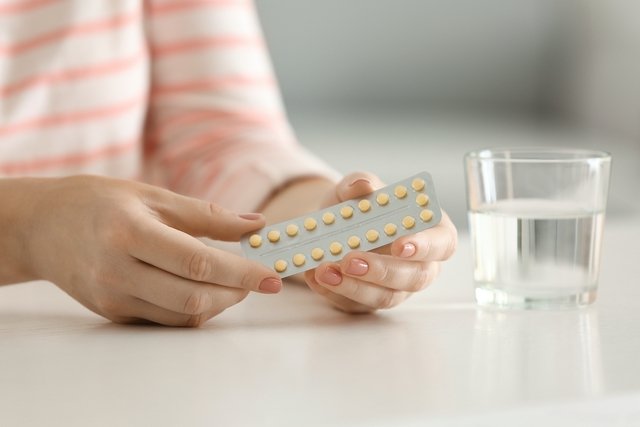Levonorgestrel is a hormone indicated to prevent pregnancy, found in the morning-after pill as an emergency contraceptive used after unprotected intimate contact or in cases of failure of the normally used contraceptive method, such as when a condom breaks or the contraceptive pill is forgotten. .
This hormone can also be found associated with other hormones, such as ethinyl estradiol, in combined pills for daily use, or even in the hormonal intrauterine device (IUD), which releases small amounts of levonorgestrel constantly into the uterus, preventing ovulation. and increasing the thickness of cervical mucus, making it more difficult for sperm to reach the uterus, preventing pregnancy.
Levonorgestrel must be used with the advice of a gynecologist, as the way it is used varies according to the amount of levonorgestrel present in its composition, or other associated hormones present in the formula. Furthermore, in the case of the hormonal IUD, it must be placed in the uterus by the gynecologist.

What is it for
Levonorgestrel is indicated to prevent pregnancy in the following situations:
- Emergency contraceptivein the case of the morning-after pill;
- Daily contraceptiveassociated with another hormone, ethinyl estradiol;
- Hormone replacement therapyassociated with estradiol valerate;
- Intra uterine device (hormonal IUD).
Furthermore, in the case of the hormonal IUD, known as the Mirena IUD, levonorgestrel may also be indicated for the treatment of excessive menstrual bleeding, endometriosis, or protection against excessive growth of the inner lining of the uterus during hormone replacement therapy, for example. example.
Although levonorgestrel is indicated as a contraceptive method for daily or emergency use, to prevent unwanted pregnancy, this hormone does not protect against sexually transmitted infections (STIs), and it is important to always use a condom during all sexual relations. Check out the main STIs.
How to use
The way to use levonorgestrel varies according to its presentation and the amount of hormone in its composition, and includes:
1. Morning-after pill
The morning-after pill contains 1.5 mg of levonorgestrel, indicated as an emergency contraceptive after unprotected sexual intercourse or failure of the usual contraceptive.
The recommended dose is 1 tablet of 1.5 mg in a single dose, taken as soon as possible, within a period of up to 72 hours, after unprotected intimate contact, as after this period the effectiveness of the morning-after pill decreases significantly.
The morning-after pill acts by delaying or inhibiting ovulation, when used in the first phase of the menstrual cycle, or by altering the mobility of sperm and eggs in the fallopian tube, reducing the risk of fertilization and subsequent implantation in the uterus, when used in the second phase. of the menstrual cycle, which is the ovulatory phase. Understand how the following sia pill works and how to take it correctly.
2. Daily contraceptive
Levonorgestrel in daily contraceptives is generally associated with another hormone, ethinyl estradiol, and is found in different dosages, under the names Microvlar, Ciclo 21, Nordette or Nociclin, for example.
The way to use the daily contraceptive with levonorgestrel and ethinyl estradiol is to take 1 tablet per day, always at the same time, following the direction of the arrows, until the end of the pack, which has 21 tablets.
After taking the 21 tablets, you must take a 7-day break, and menstruation must occur within 2 to 3 days after taking the last tablet. The new pack must be started on the 8th day after the break, regardless of the duration of menstruation.
3. Hormonal IUD
The hormonal IUD containing levonorgestrel, known as the Mirena IUD, is inserted by the gynecologist in the office, and is placed after a gynecological examination, up to 7 days after the first day of menstruation, or at any time during the menstrual cycle, as long as it is certain that the woman is not pregnant.
After insertion of the levonorgestrel hormonal IUD, sexual intercourse should be avoided for at least the first 24 hours, so that the body can adapt to the new contraceptive method.
It is recommended to return to the gynecologist 4 to 12 weeks after inserting the hormonal IUD, and at least once a year, to carry out tests and check if the IUD is in the correct position. See how it works and all the precautions after having the hormonal IUD inserted.
4. Hormone replacement therapy
Levonorgestrel for hormone replacement therapy in menopause is found in association with another hormone, estradiol valerate, called Cicloprimogyna, and should only be used under the guidance of a gynecologist. Find out how hormone replacement therapy is performed.
The levonorgestrel + estradiol valerate pack has 11 white tablets, containing 2 mg estradiol valerate, and 10 reddish-brown tablets, containing 2 mg estradiol valerate and 0.25 mg levonorgestrel.
The way to use levonorgestrel + estradiol valerate is to take 1 white tablet per day for 11 days in a row, and then 1 reddish-brown tablet per day for 10 days in a row.
The pills should be taken with a glass of water, always at the same time, following the numerical direction, until the end of the pack, which has 21 pills. After 21 days of use, you must take a 7-day break, and start another pack on the 8th day after the break.
Possible side effects
The most common side effects that may occur during the use of levonorgestrel are nausea, abdominal pain, headache, depression, mood changes, breast pain or increased sensitivity, vomiting, diarrhea, fluid retention, or decreased sexual desire. .
In the case of the morning-after pill, the woman may experience other symptoms such as small vaginal bleeding that is not related to menstruation, or a delay in menstruation, which may appear 5 to 7 days after the expected date. Learn more about the side effects of the morning-after pill.
In the case of hormonal IUDs, increased menstrual flow, absence of menstruation, benign ovarian cysts, vulvovaginitis, acne, vaginal discharge, mood changes, nervousness or emotional instability may also occur.
Does levonorgestrel make you fat?
One of the most common side effects of treatment with levonorgestrel is increased body weight or swelling of the body due to fluid retention, which also leads to weight gain. However, this effect varies from woman to woman, and there are even cases in which there is a decrease in body weight.
Who shouldn’t use
Levonorgestrel should not be used in women in the following situations:
- Pregnancy or suspected pregnancy;
- Breast-feeding;
- Current or previous history of deep vein thrombosis or thromboembolism;
- Current or previous history of heart attack, angina or chest pain;
- Current or previous history of migraine;
- Brain stroke or narrowing of the vessels that support the heart;
- Disease of the heart valves or blood vessels;
- Diabetes associated with vascular disease;
- High pressure;
- Breast cancer or other confirmed or suspected estrogen-dependent cancer;
- Unidentified abnormal uterine bleeding;
- Tumor glandular benigno;
- Liver cancer, acute hepatitis or liver disorders;
- Use of medicines such as ombitasvir, paritaprevir or dasabuvir.
Furthermore, levonorgestrel should not be used by children, elderly women, men, or women who are allergic to any component of the tablet. Discover other contraceptive methods to avoid pregnancy.
The levonorgestrel hormonal IUD should also not be used in case of recurrent or pelvic inflammatory disease, lower genital tract infection, postpartum endometritis, abortion within the last 3 months, cervicitis, cervical dysplasia, uterine or cervical cancer, or uterine leiomyomas .

Sign up for our newsletter and stay up to date with exclusive news
that can transform your routine!
Warning: Undefined array key "title" in /home/storelat/public_html/wp-content/plugins/link-whisper-premium/templates/frontend/related-posts.php on line 12
Warning: Undefined array key "title_tag" in /home/storelat/public_html/wp-content/plugins/link-whisper-premium/templates/frontend/related-posts.php on line 13



